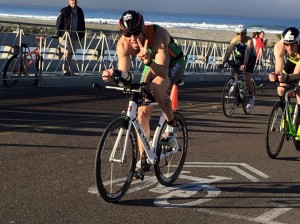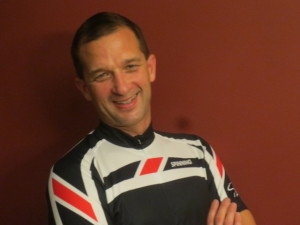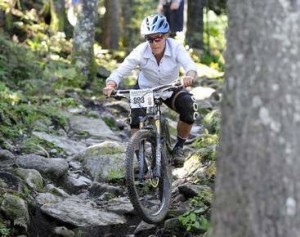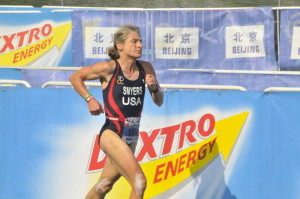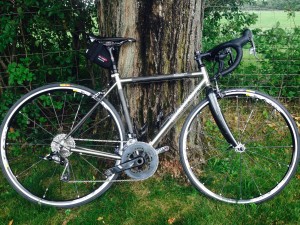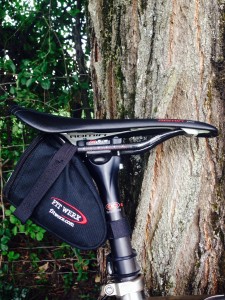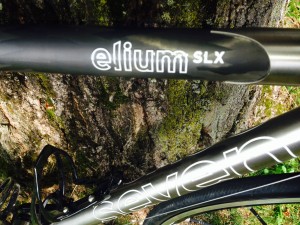Take your training to the next level – outside.
The human body is a wonderful thing. Tracing evolutionary development, we see that the body changes, grows, reaches and adapts with amazing competence. The human body is efficient. When a task is regularly repeated, the body learns to perform that task with minimum stress to muscles, bones and mind. Apply this simple truth to our fitness routines, and we will soon see why we plateau, why exercise that at first was demanding becomes moderate and why results diminish. For example, the new exerciser might struggle to run-walk a mile, lose weight with the effort and then suddenly, at the same pace, cease to lose and become bored and discouraged.
As we incorporate exercise into our daily schedules, it is important to vary that exercise and to continue to challenge in different ways, to embrace complexity. To eat the same foods every day, to run the same route, to work out at the same level of intensity, is counterproductive. More and more of the same, results in less and less. Think about it. Boot camp and Cross-Fit classes address adaptation by providing constantly changing training. Road runners have taken to trails, marathoners have moved to ultras, cyclists have turned onto dirt roads, rail trails and into the woods and swimmers have left the pool for open water.
Making the move takes courage. We must push outside our comfort zones; be bold. But we do not need to be pioneers. Others have gone before us and are eager to encourage and share. There’s more. Moving outdoors is relative to play. Though solitary activity has its own benefits, going outside is often done in community. And, community, as well as exercise, nutrition, recovery, balance and sleep is part of the equation of health and well-being.
FROM THE FITNESS BOOKSHELF
“GO WILD” by John J. Ratey, M.D., and Richard Manning (Little, Brown and Company 2014), is my new favorite read. “GO WILD, Free Your Body and Mind From the Afflictions of Civilization”
Go wild. When was the last time you were told to do that? Well, you’re being told to do so now, and in no uncertain or irresponsible way.This book visits many places, sight-sees voraciously, organizes findings and presents convincing proof of what we discovered while we were there. No, this is not a travel book, but it charges through universal themes and connects the dots from early hunter-gatherers to you and me today via evolution and civilization. So if this stuff interests you, grab a copy and settle in for a thought-provoking, perhaps life-altering venture.
Or you might want to begin with “Spark: The Revolutionary New Science of Exercise and the Brain” by John J. Ratey and Eric Hagerman, first published in 2007. Documented evidence suggests that regular exercise does far more than strengthen the body and help to create a healthy body composition. Dedicated exercise positively affects cognitive development, stress, depression, dementia, ADD, ADHD and a multitude of other disorders related to the brain. Exercise is commonly accepted to be a major contributor to a host of diseases that plague contemporary society.
But back to “GO WILD.” Having laid the foundation of the science behind his experiments and research, Ratey moved on to his more recent book, this time collaborating with Richard Manning, a journalist who was not content to take notes, but needed to put into practice what he was learning.
Trust me, this is not a rah-rah book to encourage you to get to the gym and log your hours, nor is it feel-good pop-psychology. I invite you to do a background check on the authors. You’ll find that Ratey is associate clinical professor of psychiatry at Harvard Medical School, author and speaker (www.johnratey.com and www.sparkinglife.org). He brings to this project the clinical, academic and yet practical data focusing on movement, nutrition and their effects on the brain and body, while Manning provides balance with personal interests in the wild, agriculture, the environment and eco-system restoration. Each has a story to tell.
Many other names appear on these pages. Some are recognizable for their voice in current fitness and athletic circles: Foreword by David Perlmutter, M.D., author of “Grain Brain” (2013); Dr. Loren Cordain, founder of the Paleo movement; Christopher McDougall, author of the wildly popular “Born to Run” (2009) and just released “Natural Born Heroes: How a Daring Band of Misfits Mastered the Lost Secrets of Strength and Endurance.” There are more, but these few names could whet your appetite. Then there’s talk about the value of CrossFit, Tabattas and TRX. Shall I continue?
Civilization and evolution have brought mixed blessings: an advanced society that diminishes physical exertion, promotes processed foods, extends years, but fails to sustain body and mind. The authors assault heavy issues with audacious assertions yet back their claims with anecdote and science. Though they highlight nutrition and movement as primary movers, they firmly support the value of community, connection and relationship.
Then there’s the whole piece about diseases. “We are designed to be wild, and by living tamely we make ourselves sick and unhappy,” they write. A sedentary lifestyle is relative to many illnesses as well as a culprit in malfunctioning cognitive development and skills. According to the authors, the lack of exercise makes us dumber. While movement may not prevent disease, it may help to lessen the risk and hasten the cure.
Like all good teachers, the authors tell stories; like good researchers, they generously cite resources; and like good scientists, they test their claims. In fact, they use themselves as test subjects as well. “This book is not an academic exercise for either of us, but rather a product of living our real and textured lives,” they write.They stress diversity, applying that concept to the complexity of human wants, needs and experiences. Nutritional advice is founded on two principles: reduce/eliminate the consumption of carbohydrates and, more importantly, make variety paramount in food choices.
Throughout the years, there have been countless theories surrounding sugars, fats (good, bad and trans), cholesterol, bacteria, meat and grains. The authors do not suggest a restrictive diet, but “Nuts, root vegetables, leafy greens, fruits, fish, wild game, clean, cool water. Range far and wide. Eat well.”
Equally important is the mandate to get off the couch and get moving. Go wild. The gym is good, but outdoors is better. “Exercise in nature is exercise squared.” Hit the trails, hike the hills, snowshoe through the woods, backcountry ski. Exercise daily, in many places and in many ways. Find your tribe, friends and family who will join you; a class, running partners, leaders who will challenge and followers who will encourage. Play. Pursue new projects and ideas. And when you have done so, rest. Sleep — eight hours a night if possible.
“Whether you’re stressed or relaxed, well-being is not about always being safe or fed or comfortable. Rather, it is learning to walk the line between the two, to balance, to move back and forth between them with ease and grace. Well-being comes from learning to talk to the lions.”
As you prepare to re-wild (a Ratey word), heed the closing advice: “Take a step. Assess. Then take another. This whole business becomes not an assignment or duty — rather, an exploration, a process of discovery. It’s guided by rewards.”
(Text was part of piece that appeared on the ACTIVE VERMONT page, Rutland Herald & Times Argus, by Linda Freeman, May 3, 2015.)


